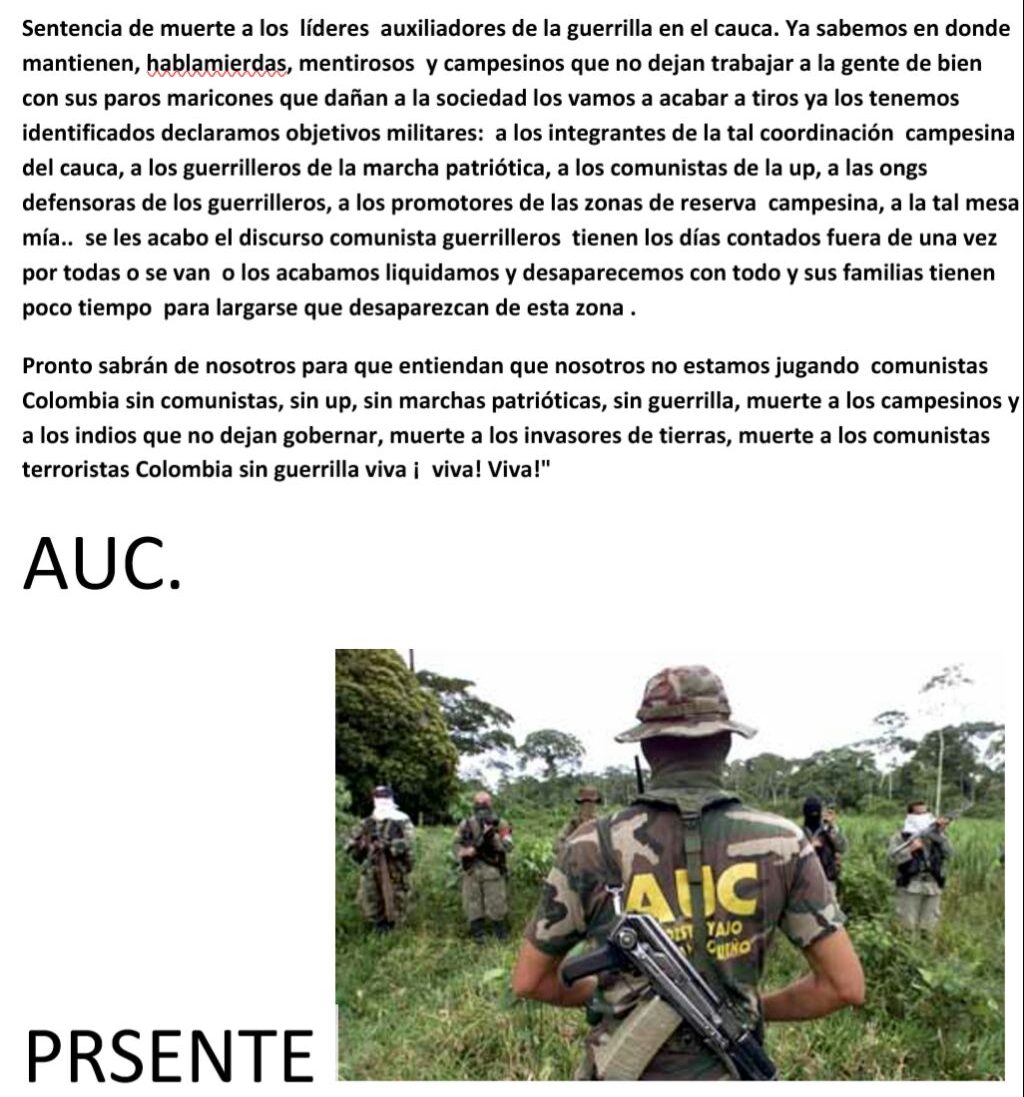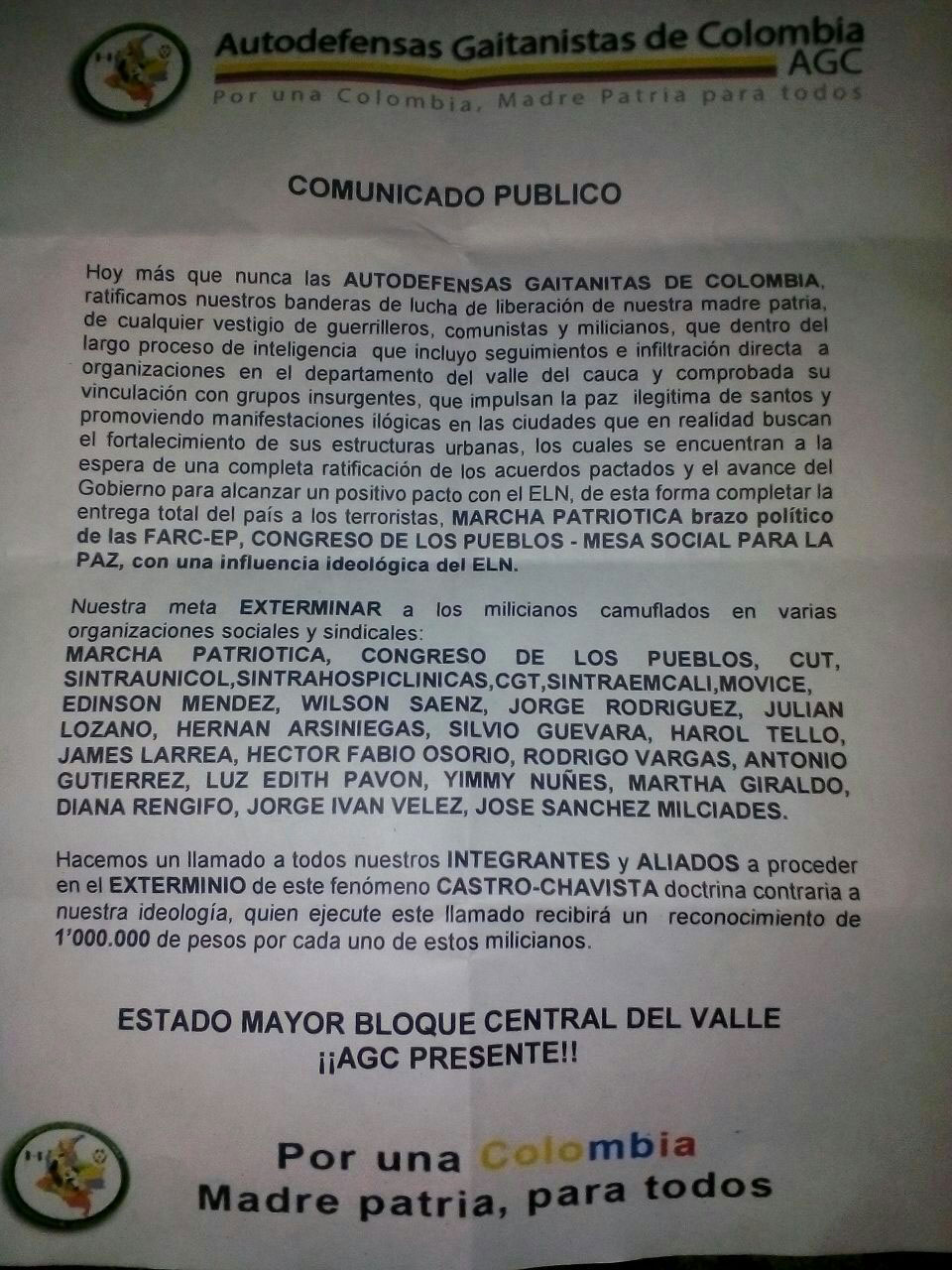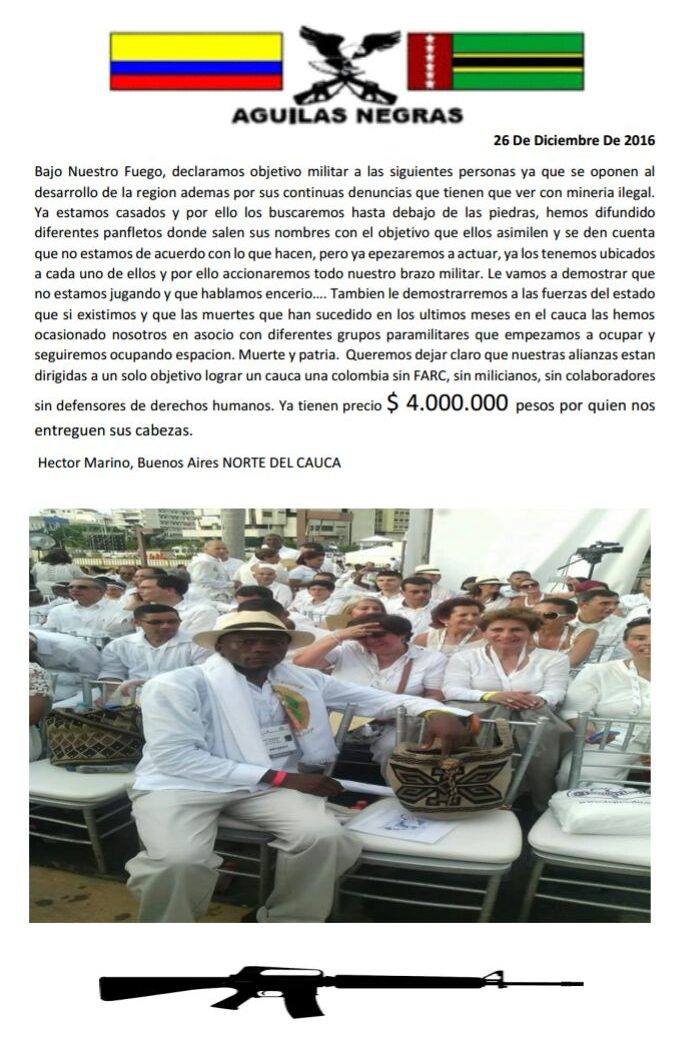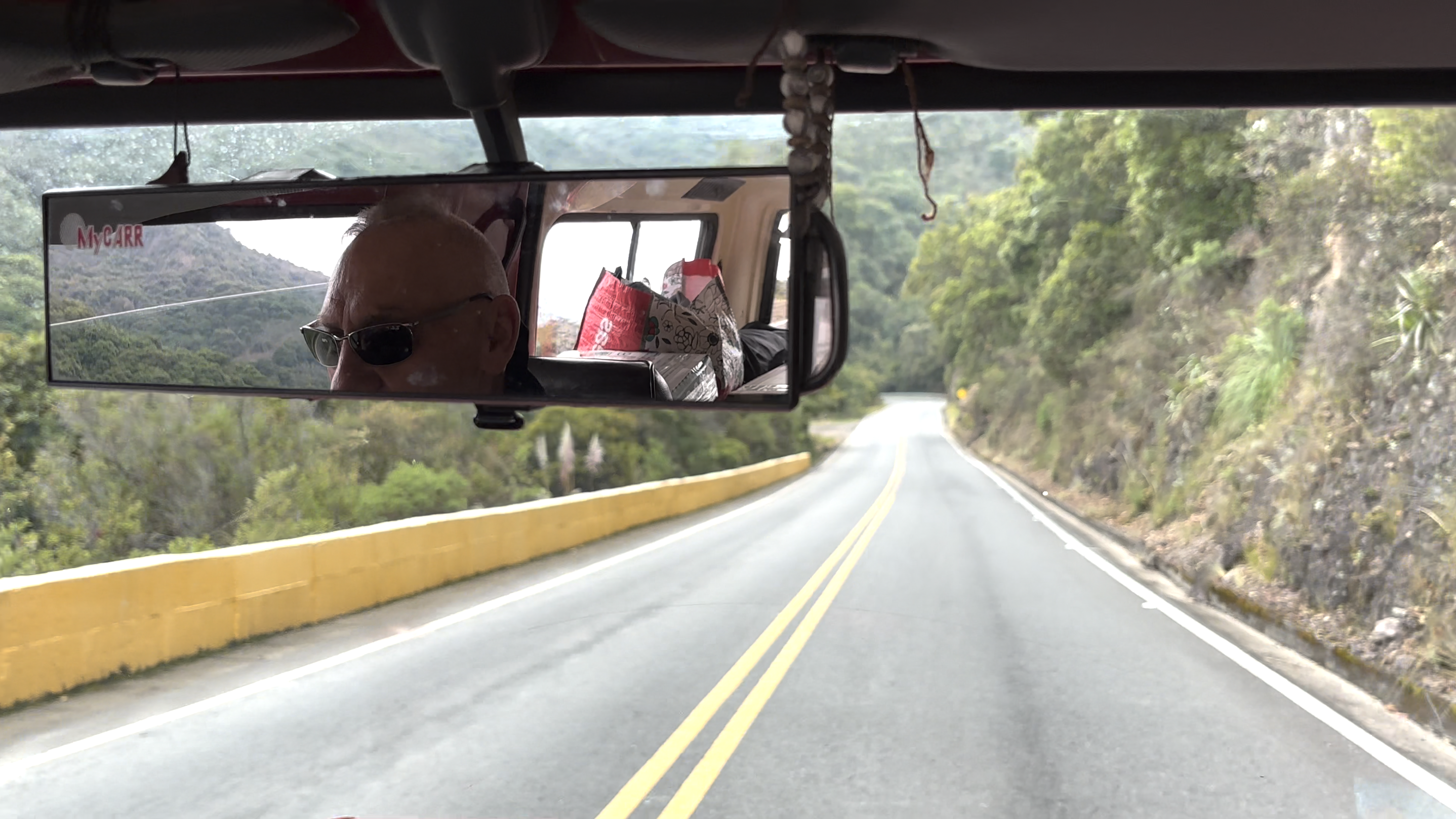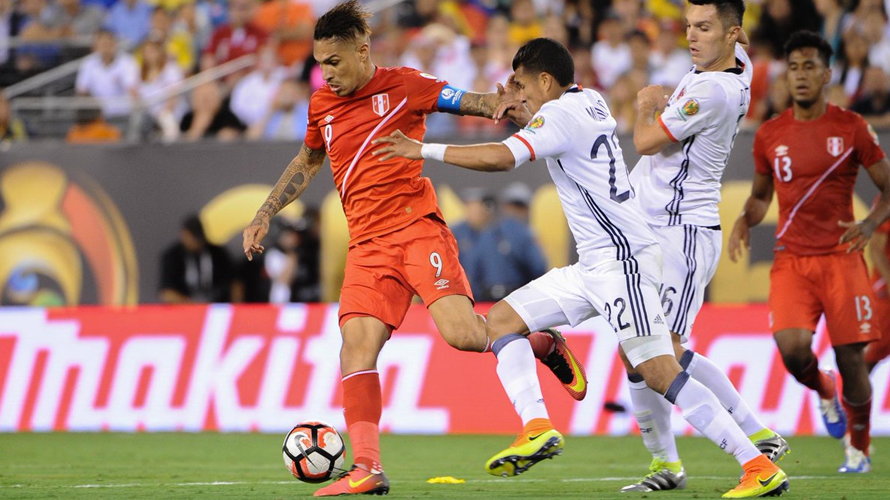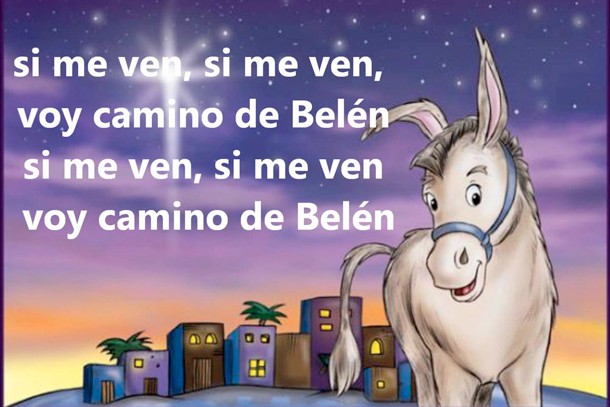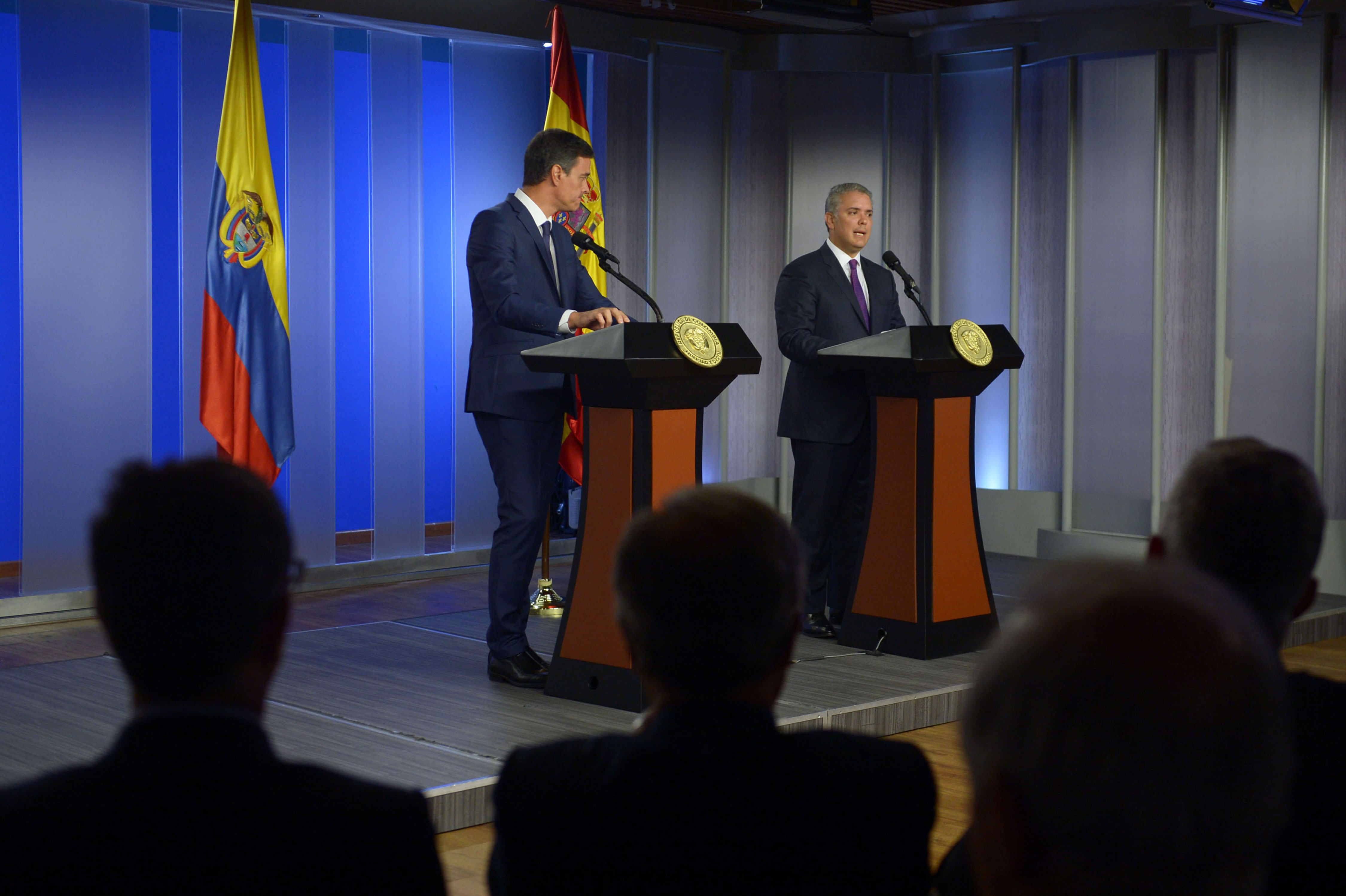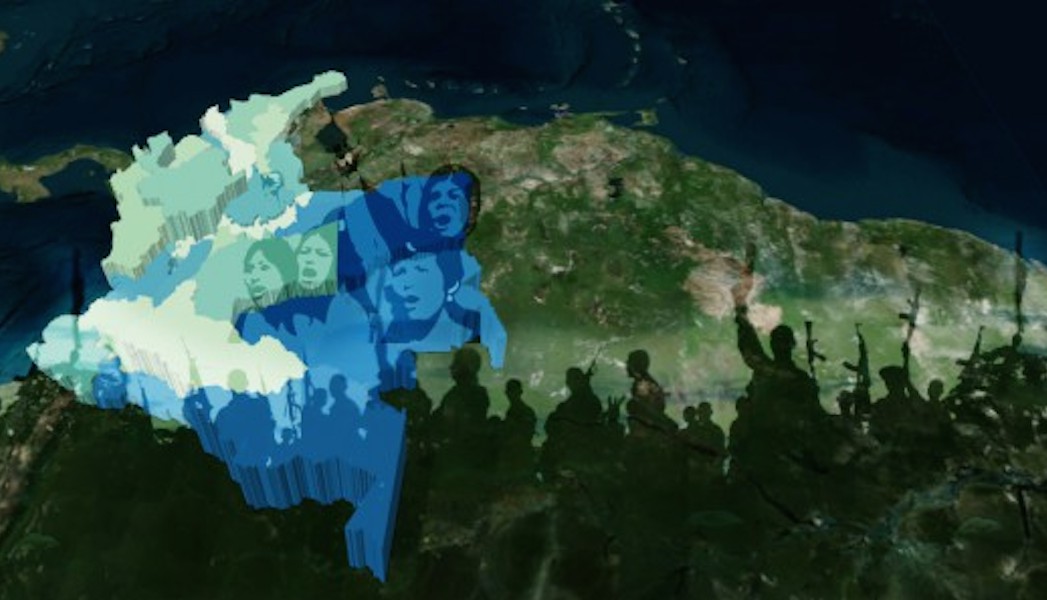
Colombian activists continue to be targeted throughout the country. Photo: Fundación Paz y Reconciliación
As Colombian activists, human rights workers, and community leaders continue to be attacked throughout the country, Emma Newbery looks at the causes they are fighting for.
The first months since the signing of the peace agreement have seen a dramatic increase in paramilitary activity, especially in areas now vacated by the FARC, as well as a spike in violence against Colombian activists and human rights campaigners.
According to the Defensoría del Pueblo, Colombia’s ombudsman’s office, there were at least 120 assassinations and 33 attacks on human rights defenders and social leaders between January 1, 2016 and February 20, 2017.
At the 161st session of the Inter-American Court of Human Rights last month, 13 Colombian social organisations asked the court to put pressure on the government to investigate and tackle the root causes of violence against human rights defenders.
And, following widespread criticism, the government does appear to be taking action.
Deputy Attorney General María Paulina Riveros assured the court that out of the 74 people who had been linked to the killings of the leaders, 58 had been arrested. However, just four have been sent to prison.
Don’t panic
The panic buttons that actually make social leaders’ whereabouts easy to track.
According to an investigation by the Associated Press, the GPS-enabled panic buttons issued by the government to around 400 ‘at risk’ people are making them more vulnerable.
The press agency’s independent security audit uncovered technical flaws that it says “could let hostile parties disable them, eavesdrop on conversations and track users’ movements.”
The idea of the panic buttons – small key sized fobs – is that they can be activated to call for help in emergencies, but the fear is that they endanger those who carry them.
Diego Mora, director of the national protection agency told AP that the flaws they had identified were overblown. But activists remain angry, saying that the risks they face are not being taken seriously and that security provisions are inadequate.
During the inauguration of the new vice president, General Óscar Naranjo, President Santos entrusted him with four missions, one of which was the protection of former guerrillas as well as social and human rights leaders.
“The experience of General Naranjo will be crucial in coordinating the tasks of protecting ex-combatants and human rights and social leaders, as well as investigating the threats and killings that have occurred,” he said.
Even so, Defence Minister Luis Carlos Villegas continues to infuriate NGOs by arguing that this is not a ‘systematic’ attack – trying to downplay fears that the country might be seeing a repeat of the massacres in the 1980s when hundreds of members of the Unión Patriótica party were killed – and that the number of deaths is not as high as some of NGOs are claiming. But the fact is, people are dying. Twenty-seven this year already, by our count.
One reason why these Colombian activists deaths have struck such a chord internationally is that these are people being killed because they dedicate themselves to improving the lives of those around them. We lay out some of the issues they are fighting for.
Environmental rights
Environmental campaigners trying to stop the pollution of their water systems, and the destruction of land and irreplaceable ecosystems have been targeted.
Victims include Javier Oteca, who was fighting against agro-industry activities in Cauca, Edmiro León Alzate Londoño, who was an active campaigner against hydro-energy projects in Antioquia, and Aldemar Parra García, who had been threatened because of his work against mining companies in Cesar.
Land rights
With over seven million people displaced by the conflict, land restitution is a major issue and there are many NGOs working in this area. Attacks against land campaigners are not new – organisations like Amnesty International and Human Rights Watch have been documenting these abuses for years.
A number of the Colombian activists murdered this year were heavily involved in land cases. Porfirio Jaramillo Bogallo, for example, was a member of the land restitution NGO Tierra y Paz and had moved back to occupy his property in Turbo, Antioquia which he said had been occupied by paramilitaries.
So far, only a small fraction of land restitution cases have been processed as the claims are so fraught with difficulties. Many involve big businesses, in some cases three or four sets of people are staking a claim to the same land and there are other stories of paramilitaries claiming houses as their own.
When such land rights activists are killed or forced to leave, the bridge between the claimants and the authorities is broken and the cases are set back.
Indigenous rights
Closely connected to land rights, the country’s indigenous communities have been hard hit. Several indigenous campaigners like Olmedo Pito García and Ruth Alicia López Guisao have been killed. While Colombian activists like Pito were campaigning for land restitution along with defending the rights of indigenous people and also protecting local land rights, López was working on a food security project. Leaders like Yoryanis Isabel Bernal Varela of the Wiwa people campaigned for the rights of her community, especially women.
Peace activists
Paramilitary groups have put up signs and printed fliers offering rewards for the murder of peace leaders, several of whom have already died.
For example, Emilsen Manyoma Mosquera and her husband Joe Javier Rodallega both belonged to CONPAZ, a network of community activists who work together for peace and social and environmental justice. In addition, the NGO she was involved with, the Comisión Intereclesial de Justicia y Paz, reports that Manyoma had been preparing to make a formal statement against the regional armed structures operating in the area.
- Declaration from the supposedly demobilised paramilitary group, the AUC, declaring death to to anyone who opposes their ideology, from farmers to NGOs.
- A copy of the leaflet distributed by the AGC offering COP$1,000,000 reward for information leading to the “extermination” of social organisations.
- The statement distributed by the Águilas Negras offering COP$4,000,000 reward for “the head” of social leaders in Cauca.
Colombian Activist killings in 2017
These are the activists who have already been killed this year:
Alvino Rosero
La Unión, Putumayo – March 27Javier Oteca
Corinto, Cauca – March 22José Antonio Anzola Tejedor and Luz Ángela Anzola Tejedor
Mesetas, Meta – March 6Fabián Antonio Rivera Arroyave
Bello, Antioquia – March 2Ruth Alicia López Guisao
Medellín, Antioquia – March 2Éder Cuetia Conda
Corinto, Cauca – February 26Francisco Javier Gómez Ayala
Meta, Cauca – February 22Faiver Cerón Gómez
Mercaderes, Cauca – February 19Oldener Albercy Rodríguez
Guapi, Cauca – February 7Luz Herminia Olarte
Yarumal, Antioquia – February 7Edilberto Cantillo Mesa
Caracolicito, Cesar – February 4Porfirio Jaramillo Bogallo
Turbo, northern Antioquia – January 29Wilfredy Gómez Noreña
Usme, Bogotá – Taken from his home on January 29Yoryanis Isabel Bernal Varela
Valledupar, Cesar – January 26Alberto Suárez Osorio
Jardín, Antioquia – January 22Hernando Murillo Armijo
Santa Cecilia, Risaralda – January 25John Freddy Concha Valbuena
Cali – January 25Hernán Enrique Agámez Flórez
Montelíbano, Córdoba – January 19Emilsen Manyoma and Joe Javier Rodallega
Buenaventura, Valle del Cauca – January 17Edmiro León Alzate Londoño
Sonsón, Antioquia – January 12José Yimer Cartagena Úsuga
Carepa, Antioquia – January 10Aldemar Parra García
El Hatillo, Cesar – January 7Juan Mosquera Rodríguez and Moisés Mosquera Moreno
Riosucio, Chocó – January 7Olmedo Pito García
Caloto, Cauca – January 6Sources: Reports from ¡PACIFISTA!, VerdadAbierta and activist NGOs

